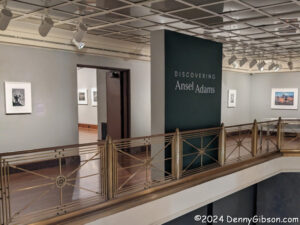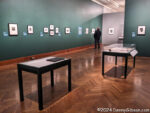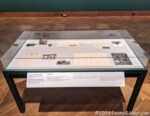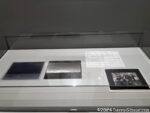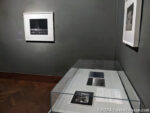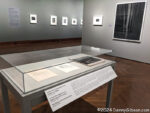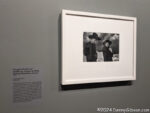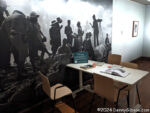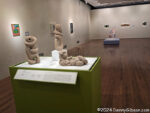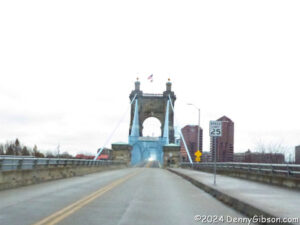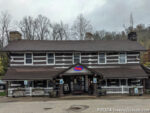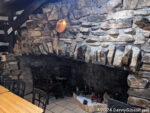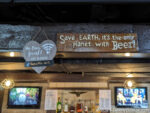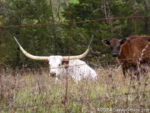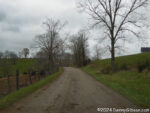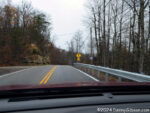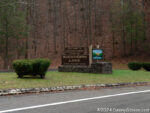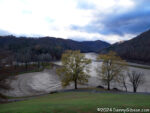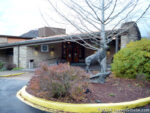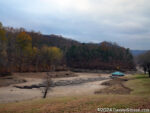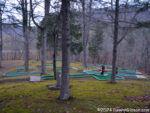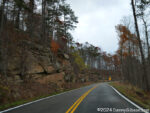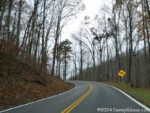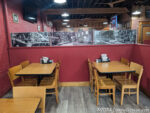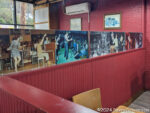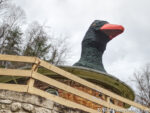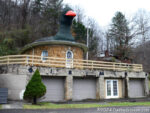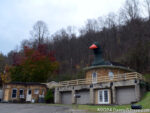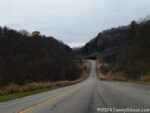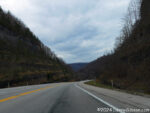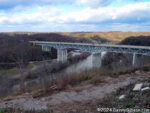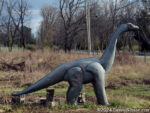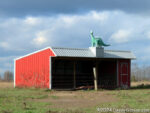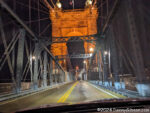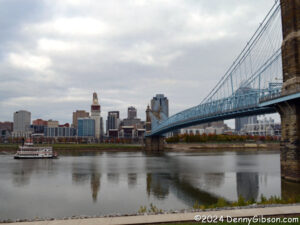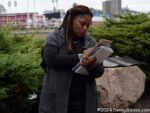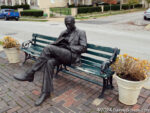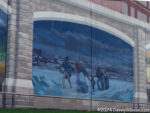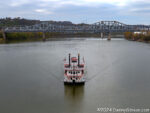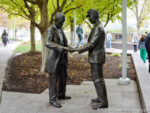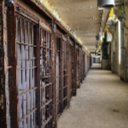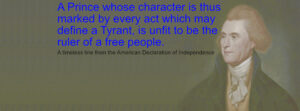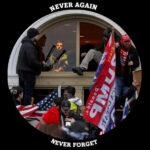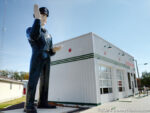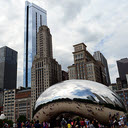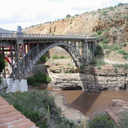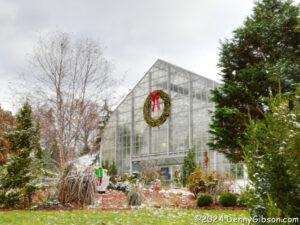 I admitted attending Krohn Conservatory‘s holiday display last year partly because of the word “yule” in the name “Golden Days of Yule”. I’m back again this year largely because of the name. It was almost unavoidable since “Solstice Glow” was near the top of the list of hits in my annual search for solstice-related events. I went on Wednesday when temperatures were in the 20s and an overnight dusting of snow left no doubt that winter was here and made the warmth inside the giant greenhouse much appreciated.
I admitted attending Krohn Conservatory‘s holiday display last year partly because of the word “yule” in the name “Golden Days of Yule”. I’m back again this year largely because of the name. It was almost unavoidable since “Solstice Glow” was near the top of the list of hits in my annual search for solstice-related events. I went on Wednesday when temperatures were in the 20s and an overnight dusting of snow left no doubt that winter was here and made the warmth inside the giant greenhouse much appreciated.
 The giant poinsettia tree that has become a regular winter feature at Krohn is once again front and center near the entrance. The tree appeared, as planned, on December 6 more than a month after the November 2 opening of “Solstice Glow” and is scheduled to remain two days beyond the January 5 closing. I intentionally delayed my visit to not miss the tree.
The giant poinsettia tree that has become a regular winter feature at Krohn is once again front and center near the entrance. The tree appeared, as planned, on December 6 more than a month after the November 2 opening of “Solstice Glow” and is scheduled to remain two days beyond the January 5 closing. I intentionally delayed my visit to not miss the tree.

 At the heart of Kron’s holiday show are the models of area landmarks made from natural materials. A new model is constructed each year to be added to the display. This year that new model is of the CVG Airport complete with airplanes and a pair of abbreviated runways.
At the heart of Kron’s holiday show are the models of area landmarks made from natural materials. A new model is constructed each year to be added to the display. This year that new model is of the CVG Airport complete with airplanes and a pair of abbreviated runways.

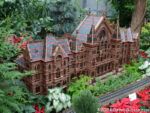
 Last year’s addition was the National Underground Railroad Freedom Center. The year before that, the eight-foot-long Music Hall was added and Findlay Market was new in 2021.
Last year’s addition was the National Underground Railroad Freedom Center. The year before that, the eight-foot-long Music Hall was added and Findlay Market was new in 2021.
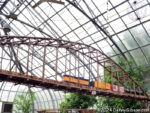
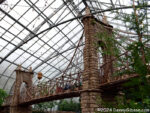 Bridges and railroads have played an important role in Cincinnati’s history and the Krohn holiday display recognizes both with model trains traveling over replicas of automobile bridges. Of course, the 1866 Roebling Bridge predates automobiles but that is its role today. The Daniel Carter Beard Bridge opened in 1976 but is partially closed today due to a November 1 fire over which arson charges have been filed.
Bridges and railroads have played an important role in Cincinnati’s history and the Krohn holiday display recognizes both with model trains traveling over replicas of automobile bridges. Of course, the 1866 Roebling Bridge predates automobiles but that is its role today. The Daniel Carter Beard Bridge opened in 1976 but is partially closed today due to a November 1 fire over which arson charges have been filed.
All of those model buildings, bridges, and trains are the work of Applied Imagination of Alexandria, KY. Today the company is responsible for similar displays in many cities but started the whole concept here at Krohn in 1991. In 2012, station KET created a video profile of this remarkable company which can be accessed from the company website or directly here.
I have made much of my attendance at this event being prompted by the words “yule” and “solstice” in its name. I came dangerously close to making way too much of that and making a big mistake. I’m guessing we have all seen click-bait, stir-the-pot posts of the form “X is really upset by Y” with little or no evidence that X is even aware of Y, let alone upset by it. When Krohn Conservatory announced the title of this year’s winter event, I thought I saw some posts bemoaning the presence of the word “solstice” and the absence of the word “Christmas”. I even thought addressing that would be a major part of this post. Fortunately, I took another look.
As one commenter observed, there were “…more people complaining about people complaining than actual people complaining.” In all honesty, I found no one complaining. Just some people defending something that was not attacked. I believe what I initially took as a complaint about the name was intended as a many-year belated complaint about a pricing change. I guess that I, like several news sources, had somehow decided this was the Krohn Conservatory Christmas display. It is possible that once upon a time, that was its official name, but of all the online references using the word Christmas that I found, not one came from the conservatory.
I believe the official titles of Krohn Conservatory’s holiday displays over the last dozen years were:
2024 – Solstice Glow
2023 – Golden Days of Yule
2022 – Celestial Holiday
2021 – Trains and Traditions
2020 – A Very Merry Garden Holiday
2019 – A Zinzinnati Holiday
2018 – A Crystal Holiday
2017 – Cincinnati Choo Choo
2016 – Whimsical Wonderland
2015 – The Poinsettia Express
2014 – Magic and Mistletoe
2013 – A Cincinnati Scenic Railway

